Welcome to Ceramic Review
Ceramic Review is the magazine for contemporary and historical ceramics, ceramic art and pottery.
Ceramic Review Issue 328
July/August 2024
Ceramic Review is the magazine for contemporary and historical ceramics, ceramic art and pottery.
July/August 2024
Design duo Marée and Paul Allitt share a love of form, pattern and colour. They explain how they collaborate and make their mid-century inspired ceramics
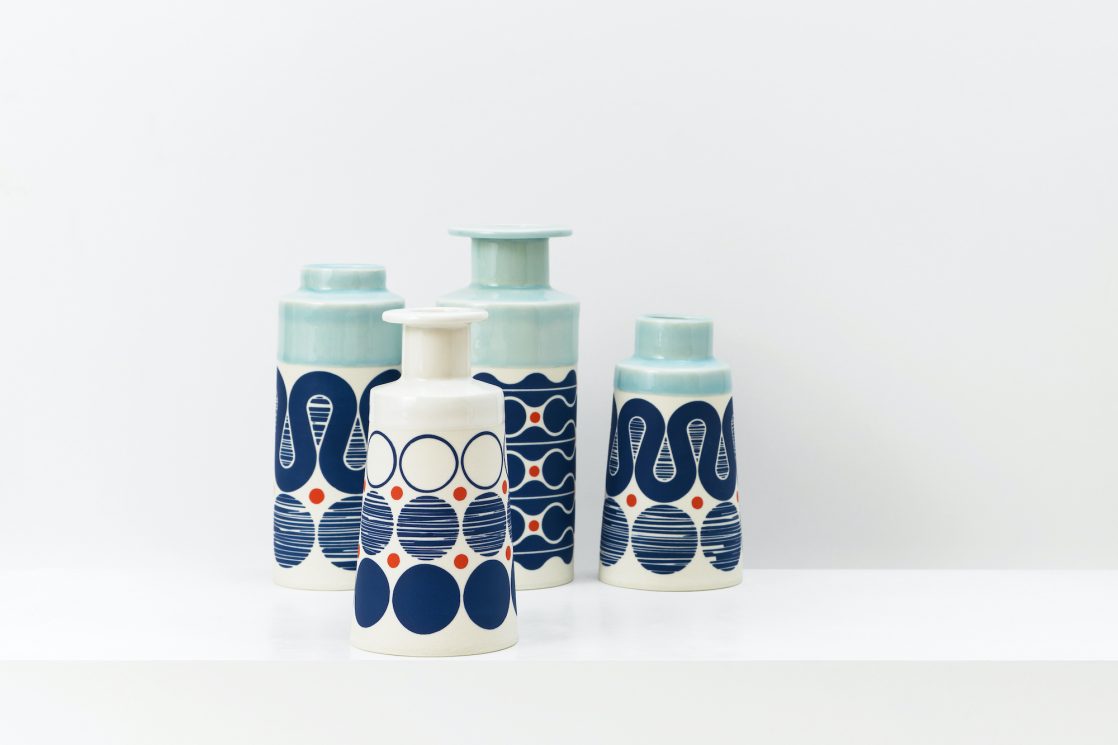
Marée: We were both working-class kids growing up in Hull in the 1950s and 60s, so pottery was a relatively affordable way to brighten up the house. With Hornsea Pottery almost on our doorstep, John Clappison’s home décor served as an early introduction to contemporary art and design. As did Hull’s Ferens Art Gallery, which we both frequented, although we didn’t meet until a few years later. The first pot I bought with my pocket money was a Hornsea Impact vase that I still treasure.
Marée: We went to art college in Portsmouth together in the 1970s to study Fine Art. There was a strong undercurrent of work based on geometrical systems and minimalism. What we took away from our studies was the importance of this legacy of ideas, processes and unfolding growth, learning how to harness the connections between disciplines and an egalitarian ethos. This applies so much to artists working with ceramics. However, during and after college, Paul’s ongoing battle with Crohn’s disease meant many stays in hospital and a lengthy recovery, so the usual post college career paths were difficult to fully explore.
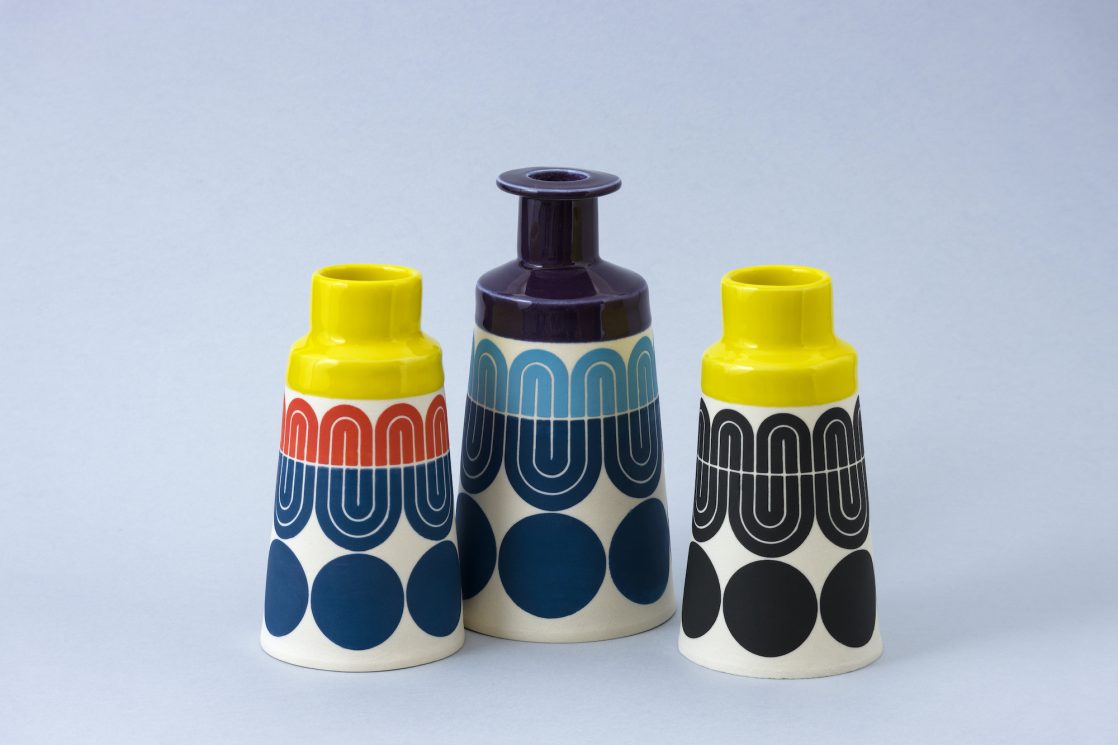
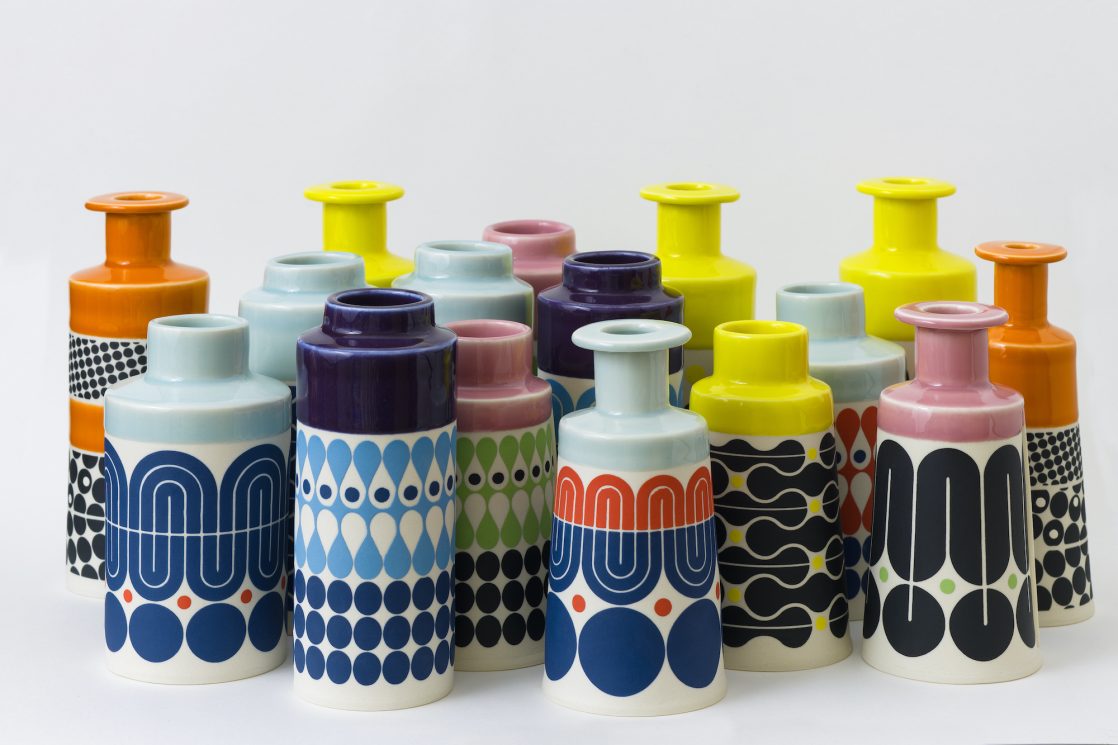
Marée: We would describe our work as ‘approximately’ pots. Not significantly functional in the traditional sense, nor sculptural, but ornaments for the mantelpiece. There is a tradition of pottery ornaments for mantelpieces that goes back to Staffordshire flatbacks – something of the fairground, a glimpse of wonder. If we had to nominate artists that have been influential, Frank Stella, Stephen Buckley, plus more recently Betty Woodman, from a host of others would be at the top of the list.
Paul: Not to disregard form, but for us, form provides a canvas. Before we came to ceramics, much of our work was already concerned with repeated elements and random variations in different media. We never thought of our work as a window into the world, but a surface bearing the tracings of our various generative systems. Wrapping a flat surface around a cylinder or cone was a short step to slab building in clay, where there is already a strong tradition of pattern making and decoration to explore.
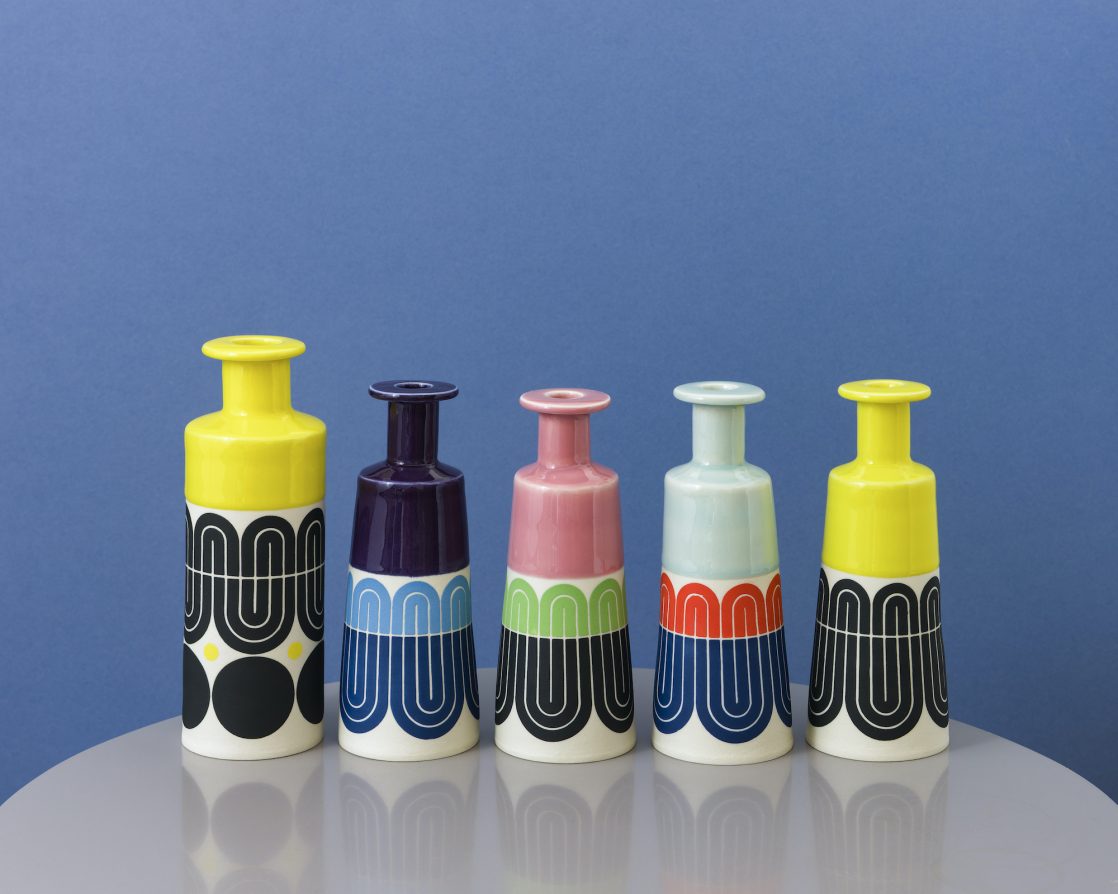
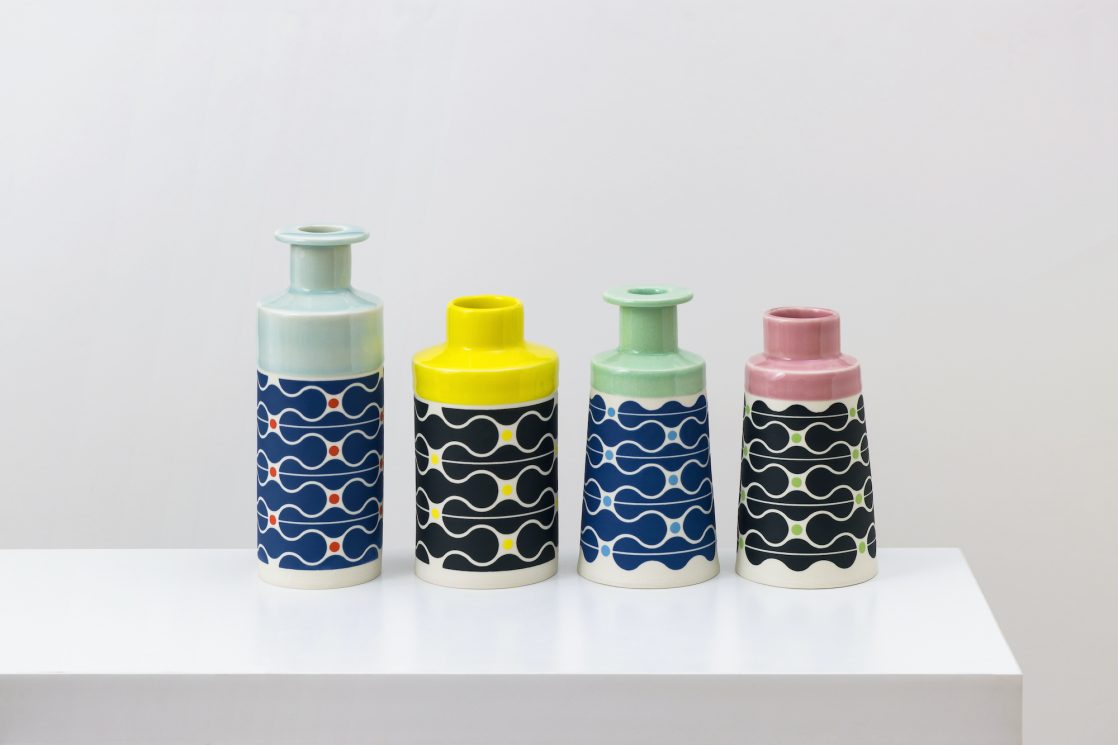
Marée: We have been working together on and off for a long time, even if it was only to bounce ideas around. It is perhaps more interesting for us to look at how our disparate interests coalesced almost inevitably into making pots. I became interested in making ceramics first and with the materials and kiln at hand, Paul tried it as well. You could say that my sponge-print cups, jugs and vessels (pictured below) were the prompt for us to work more closely together. Long shared interests became tentatively coherent in these pieces. We had each staked out territory and made works together before, but this collaboration resonated.
Paul: Neither of us have had any formal ceramics training, we have come to our working methods haphazardly and with much experimentation. Each piece is assembled from slab-built or formed sections, the main part is hand-rolled to 3mm and printed with coloured slip using Mylar stencils produced on our own cutting machine. I am a graphic designer and use Adobe’s Illustrator to produce the SVG files necessary. We have used Valentine’s grogged porcelain for quite some time. We don’t wedge but we do leave the clay to rest between polythene sheets after rolling to let any stretching relax. We bisque fire to 1000˚C with a glaze firing of 1225˚C in our Rohde’s electric kiln, which is getting a bit small to keep up. We use a mixture of commercial glazes and slips, mostly from the usual suppliers such as Scarva and Bath Potters. By coming late to pottery, it feels like we don’t have the time to explore making our own glazes.
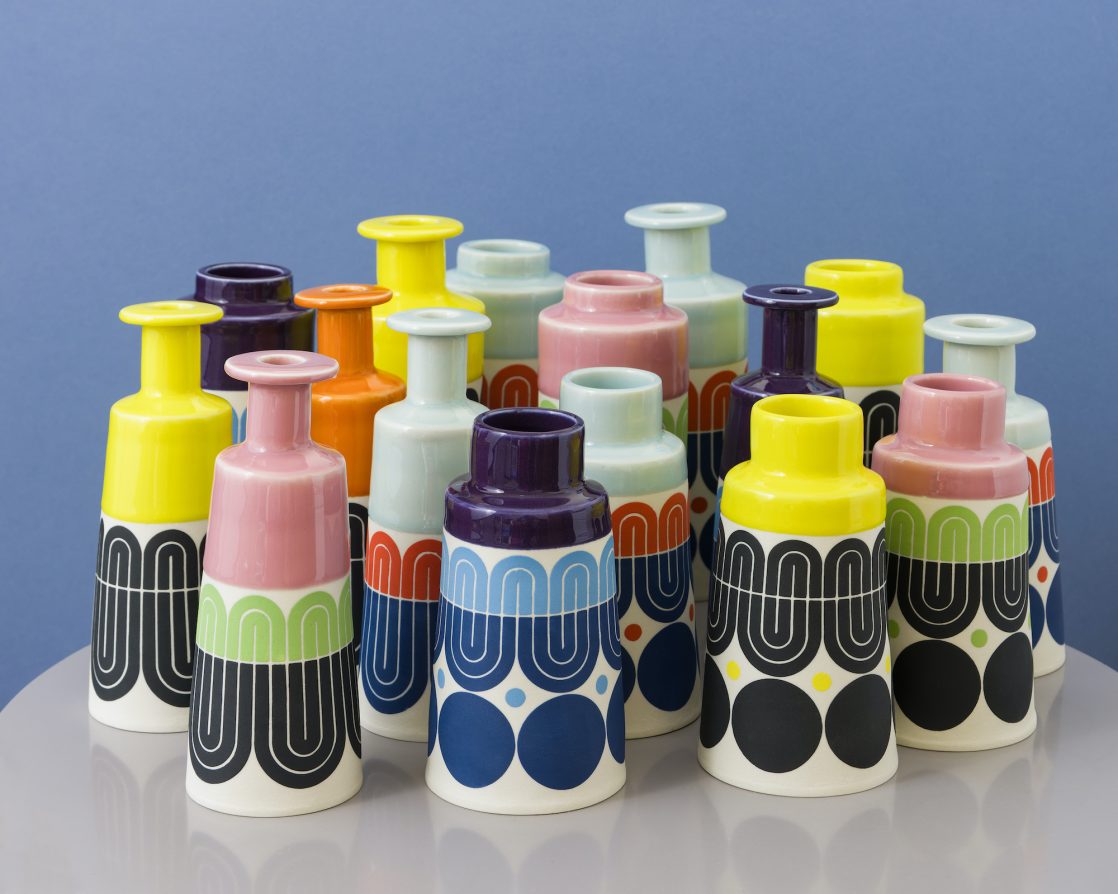
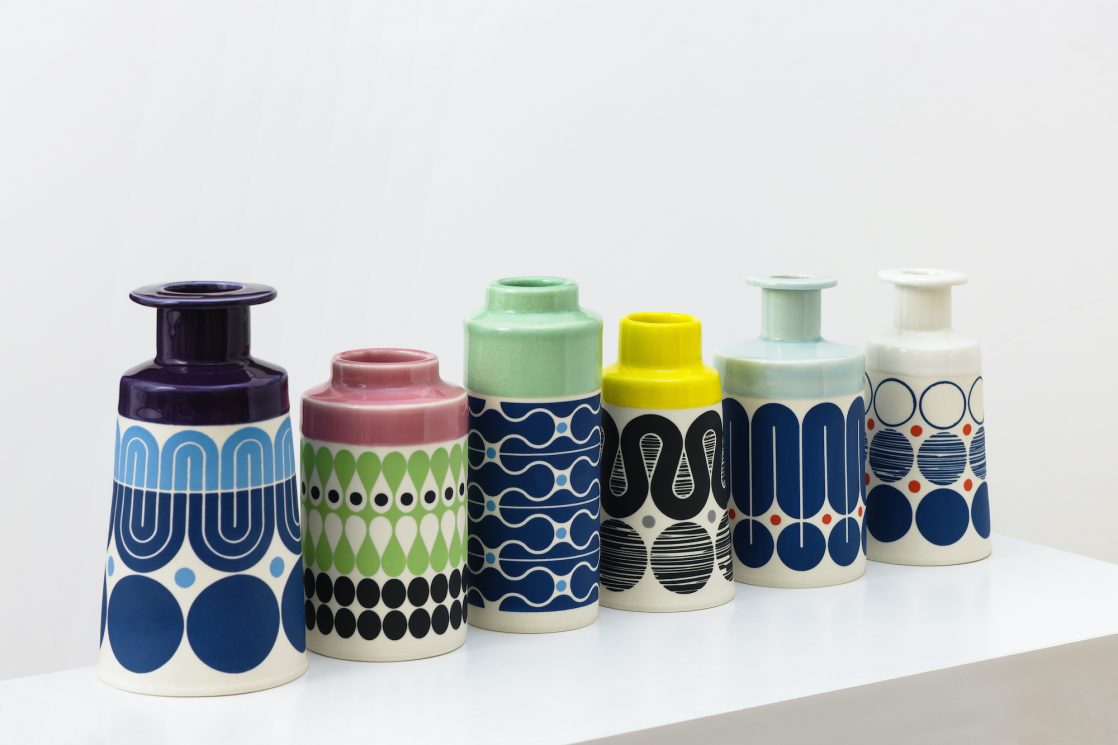
Paul: When we moved to Cambridge after college, the wonderful Kettle’s Yard became our local gallery, H.S. (Jim) Ede’s former home. We are both grateful to its then curator, Hilary Gresty, who invited us to volunteer and then work there. This was the beginning of what became a lifelong connection and at times, almost a second home. We lived day to day with this important yet intimate collection, where Jim displayed his finds with as much care for a pebble found on a beach, as a Lucie Rie, an Alfred Wallis or a Ben Nicholson; all next door to an ever-changing and often challenging exhibition programme.
Paul: ‘Wow!’ is a common reaction to our work, some people just get them. We have a bunch of theories about how a closed set of variations evolved into an open-ended series, which we would call our meaning, but we wouldn’t like to impose. While we work in series or sets of pots, we are conscious that they are usually only seen en masse in a gallery or photograph. We hope that each one of a series carries an echo of its fellow counterparts.
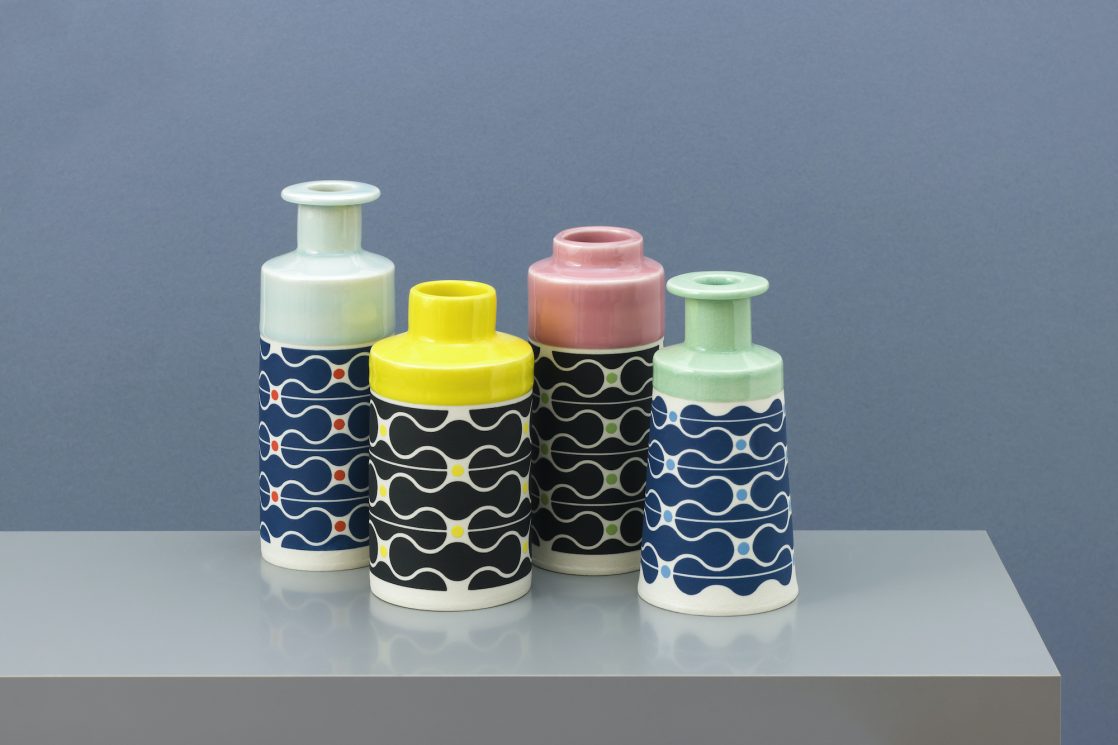
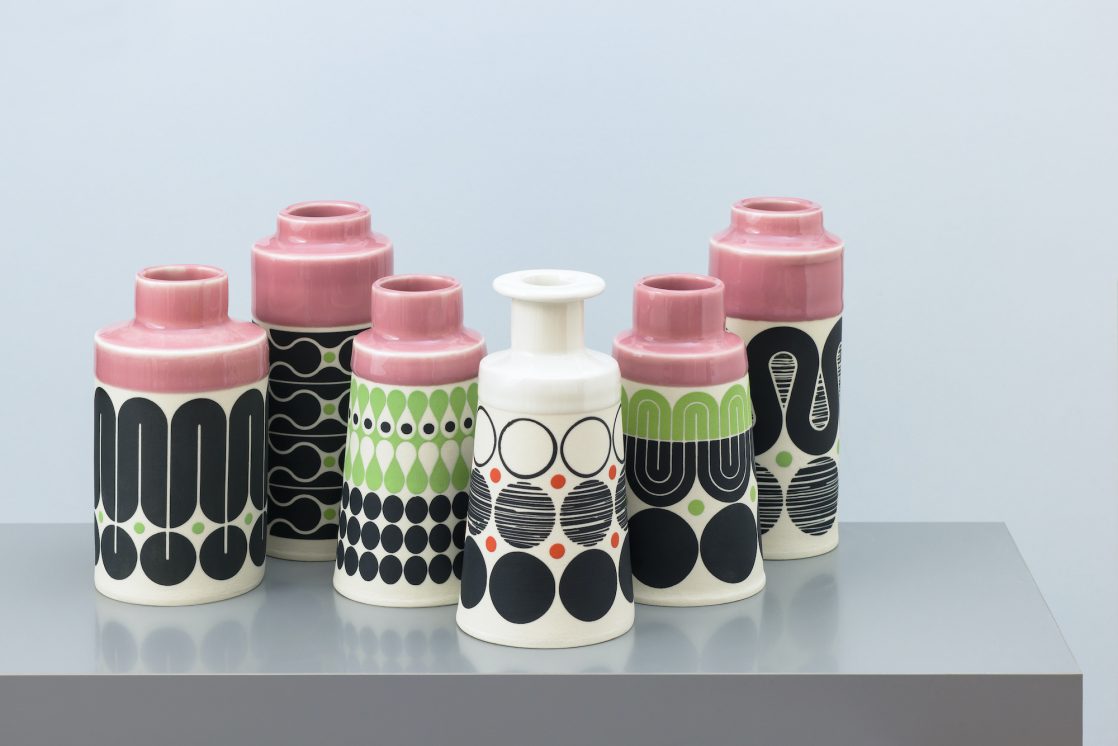
Paul: The pots came about with little thought to the time it took to make them. We are looking at quicker ways of making, such as casting or even 3D printing, but that is still at the ideas stage. The difficult consideration is how to keep the essence of the pots. We still want to keep our hands-on approach and retain a measure of the wonkiness that is in the traces of our making. If people take one home and put it on their mantelpiece where it can give a little joy in passing, that is all we ask.
For more details visit mapmap.co.uk; @mapmapart
Images: courtesy of MAPMAPTM; photography Paul Allitt